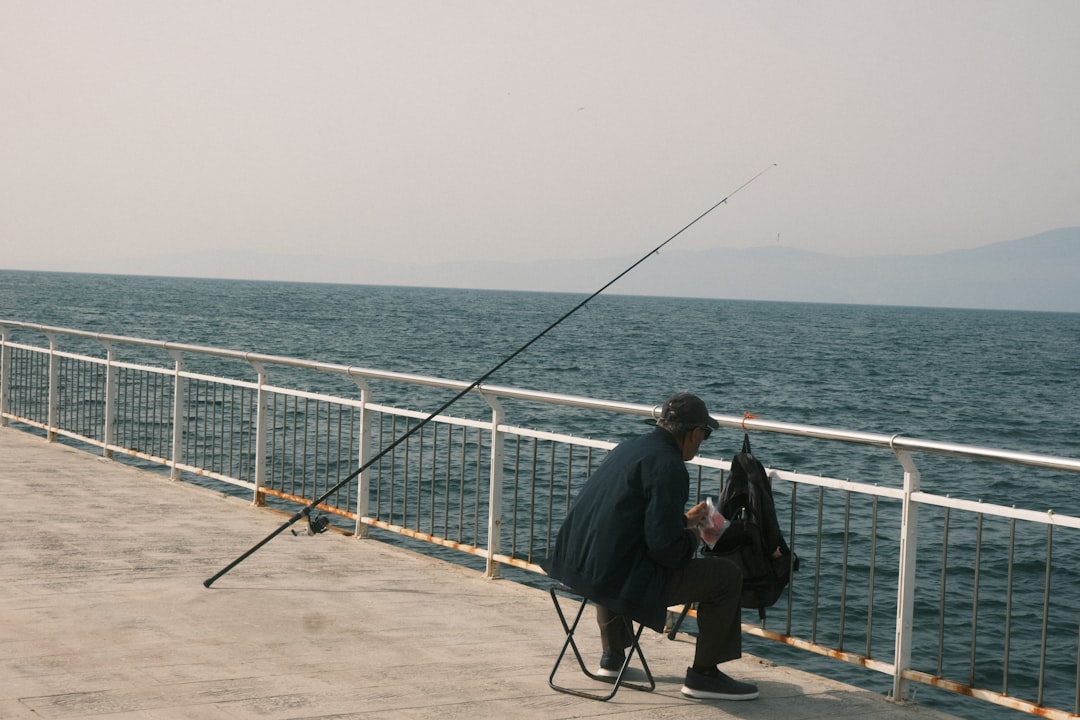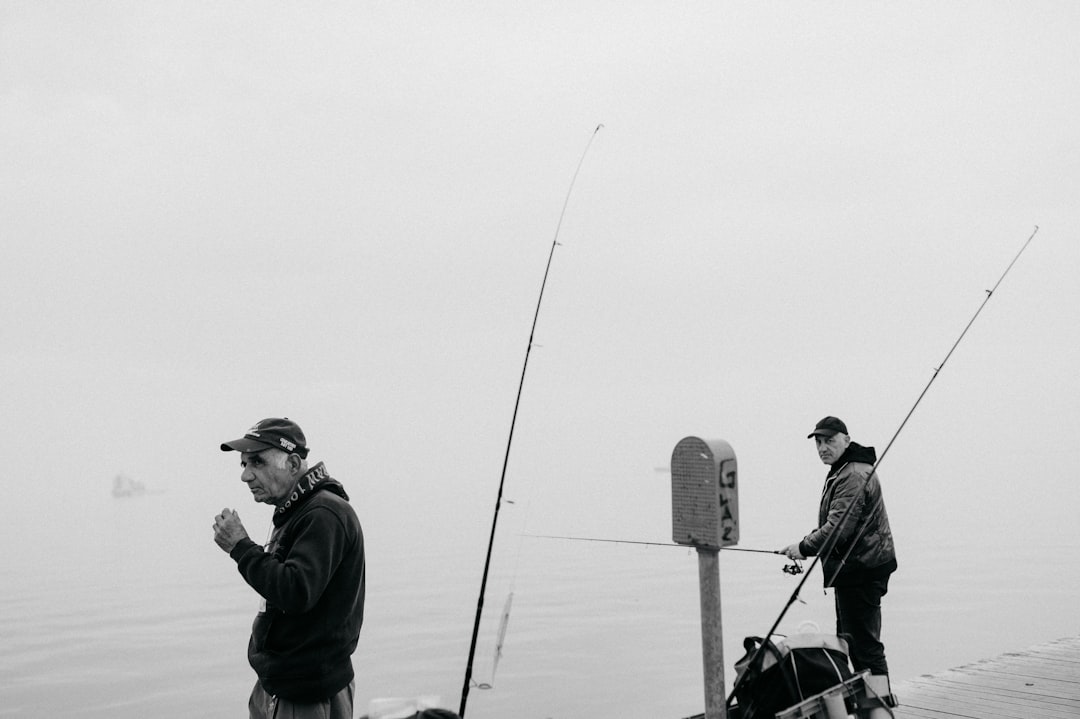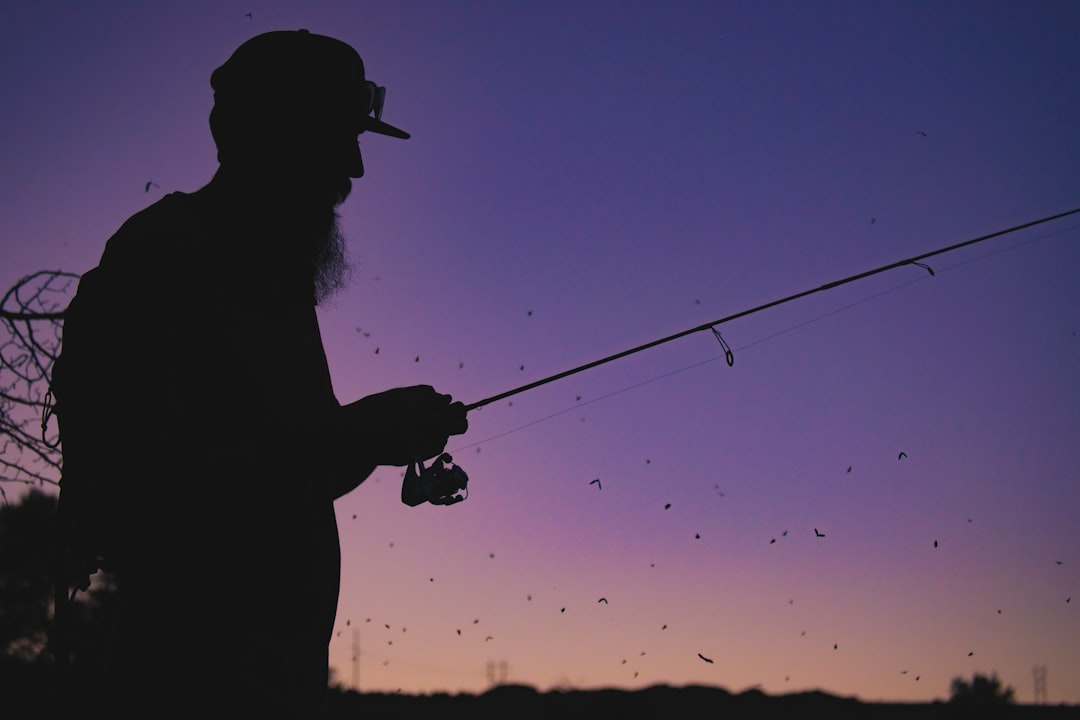

Engage prospects with a scan and streamline customer engagement with FREE QR code marketing tools by Sona – no strings attached!
Create a Free QR CodeFree consultation

No commitment

Engage prospects with a scan and streamline customer engagement with FREE QR code marketing tools by Sona – no strings attached!
Create a Free QR CodeFree consultation

No commitment
U-catch fishing businesses are navigating a pivotal moment. Regulations are tightening, consumers are demanding more transparency, and revenue increasingly depends on your ability to connect dockside interest with digital follow-up. Too often, the story ends at the cooler or the counter because the journey from physical curiosity to online action is broken. That gap costs sales, weakens loyalty, and complicates compliance.
QR codes are now a practical bridge. They connect every package, dock sign, or event badge to a living record: sustainability credentials, batch-level traceability, inventory availability, service options, and even instant purchasing or preorders. Scans are simple and familiar, do not require an app, and convert otherwise anonymous foot traffic into actionable engagement signals. With a thoughtful plan and the right tools, you can capture demand at the dock, measure what works, and turn transparency into a competitive advantage.
QR technology is not another gimmick. It is a flexible system that replaces manual logs and non-interactive signage with trackable experiences that improve traceability, reduce administrative burden, and elevate customer trust. The result is a clear path from scan to revenue: a digital thread that starts on the pier and ends with a satisfied customer, a clean audit trail, and a stronger brand.

Bridging the physical world of fisheries with powerful digital experiences is no longer optional. U-catch operations lose high-value prospects every time a conversation at the dock or a glance at a package is not captured. QR-enabled workflows solve this by making each touchpoint an onramp to a measured, compliant, and conversion-ready journey.
Consider common analog processes you can retire. Replace paper catch registration with a QR-enabled dock form that timestamps entries and auto-generates batch IDs. Swap printed brochures for dynamic QR landing pages that always reflect the latest availability, certifications, traceability, and pricing. Use QR check-ins at events to collect attendee data rather than relying on sign-in sheets that never make it into your system. These small substitutions create a compounding effect: less friction for customers and staff, more accurate data, and higher conversion rates.
Sona QR supports this transformation by generating dynamic codes, centralizing performance data, and pushing scan events into tools you already use. From dock signage to packaging, you can manage every code in one place, update destinations without reprinting, and attribute scans to real outcomes. Learn more in the product overview.

U-catch operations are uniquely physical. A buyer’s interest often sparks next to a cooler, a boat, or a display case. Without a clear digital path at that exact moment, intent dissipates and follow-up becomes guesswork. QR codes eliminate friction by letting visitors self-serve in seconds and by turning every surface into a way to act.
Applied to U-catch materials, QR codes elevate everyday interactions. Add them to landing slips to simplify buyer registration. Print them on catch tags to tie fillets back to a verified record. Place them on dock kiosks to guide visitors to your product story and an instant SMS sign-up for fresh-catch alerts. You will reduce drop-off, collect qualified leads, and maintain audit-ready documentation at every step.
Not every QR code needs to do the same job. Pick formats that align with how and where your audience engages, and that match the outcome you want in that moment. U-catch businesses benefit most from flexible, dynamic approaches that can evolve with inventory, seasons, and regulations.
Dynamic QR codes are ideal for U-catch businesses because they avoid reprints and enable advanced analytics. Sona QR supports all formats from a single dashboard, so you can deploy, update, and track codes across your boats, packaging, signs, and promotional materials with consistency.

Real growth happens at the intersection of interest and access. In U-catch environments, those intersections are everywhere: on the dock when someone asks about provenance, at the stall when a shopper wonders about sustainability, or in a chef’s kitchen when inventory needs to be verified. Place QR codes where curiosity peaks and where the next step is clear.
The guiding principle is to meet your audience where they are. For each channel, tailor creative and placement to maximize visibility and clearly state the value of scanning. Consistent visual framing and concise calls to action can lift scan rates dramatically, turning casual interest into a measurable pipeline.

The strongest use cases combine compliance and commerce. They create value for customers and teams while protecting your business from errors, gaps, or missed follow-up. Start with a few high-impact deployments, then expand as you see performance data.
Each use case can be tagged and tracked in Sona QR so you can attribute outcomes accurately. Start with transparency and registration, then layer in loyalty and wholesale flows to transform every scan into a step toward revenue.
Every scan tells you something about the scanner: what caught their attention, where they were, and what they wanted to do. Treat scans as first-party data and intent data that fuels segmentation, retargeting, and personalized follow-up. With a structured QR taxonomy, you can build audiences aligned to real behavior rather than guesses.
For U-catch operators, the most useful distinctions include local residents vs visiting tourists, eco-conscious buyers vs price-driven buyers, retail customers vs wholesale prospects, and first-time buyers vs repeat patrons. With Sona QR, you can create and manage these segments automatically, then retarget with content that respects what each group values.
QR codes unify your brand experience across offline and online channels. By using them consistently, you ensure that wherever a buyer encounters your business, the journey continues seamlessly, and every interaction is measurable.
Think of QR codes as the offline onramp to your digital engine. With a centralized platform like Sona QR, you can manage codes across channels, monitor performance by context, and sync scan data with your CRM and ad platforms so your multi-channel campaigns stay aligned and accountable.
Identify the business gap you want to close and the conversion you want to drive. For U-catch operators, common goals include transparent catch verification at the dock, streamlined catch registration for compliance, loyalty enrollment at point of sale, or wholesale inquiry capture at tastings and demos. Pick one outcome per QR to keep the call to action clear and the reporting clean.
Define what success looks like in concrete terms. Examples include a 30 percent lift in traceability page views, a 20 percent increase in loyalty sign-ups per weekend, or five new chef inquiries per month. By mapping a use case to a measurable outcome, you can design the QR journey and destination content with intent and evaluate performance objectively.
Choose a dynamic QR for most scenarios so you can update the destination, add UTM parameters, and access scan analytics. Dynamic links protect you from reprinting and enable campaign optimization over time. Use static codes only for fixed destinations like a permanent safety guide or a file that will not change.
Match the format to the moment. Send a web link to a batch page from packaging; trigger a digital form for catch registration at the dock; use vCard for chef networking; use SMS for fast fresh-catch alerts enrollment. Sona QR lets you create all formats and manage them from a single dashboard, so switching or updating is simple as your needs evolve.
Make the QR easy to see and worth scanning. Add a clear frame, brand colors, and a concise call to action that states the benefit: Scan to verify this catch, Scan for today’s availability, Scan to join loyalty for 10 percent off. Place codes at eye level on signs, and on labels avoid edges or folds that can distort scans.
Test across devices, angles, and lighting before deploying at scale. Try different sizes for dock banners vs small labels, ensure contrast is strong, and verify codes still scan when wet or under glare. A quick preflight check saves weeks of underperforming signage. Keep the landing experience fast and mobile friendly with minimal taps to complete the action.
Roll out your codes where intent is highest. Start with dock signage, packaging labels, market displays, and event materials. For B2B, include QR codes on chef kits, wholesale catalogs, and sample boxes. Tag each placement in Sona QR so you can compare performance by channel and location.
Plan a cadence of updates. Rotate creative monthly, change calls to action by season, and spotlight different stories such as sustainability in spring or recipes in holiday periods. Use insights from early deployments to guide where to expand next: direct mail to high-response neighborhoods, Wi-Fi QR at busy stalls, or additional codes on receipts to capture post-purchase feedback.
Instrument every code with UTMs and naming conventions that identify placement, audience, and goal. Monitor scans by time, device, and location in Sona QR, then connect those scans to downstream outcomes such as form submissions, loyalty enrollment, or orders. Run A/B tests on landing page headlines, calls to action, and incentive offers to increase conversion rate.
Loop in your team. Share weekly dashboards with marketing, sales, and operations so everyone learns which assets work and which need adjustment. Use findings to refine creative, consolidate underperforming placements, and double down on the channels that reliably drive revenue and compliance accuracy.
Measuring scan counts is a start, but it is not enough. Real value comes from connecting each scan to buyer progression and business impact. The goal is to understand which placements and messages trigger high-intent actions and to use that insight to allocate resources wisely.
With Sona QR and Sona.com, you move from activity to attribution. Sona QR tracks every scan with rich metadata and integrates with your CRM. Sona.com maps scans to buyer journeys across website visits, ad clicks, and email engagement, then attributes revenue across touches. You see how dock signage fuels pipeline, how packaging scans drive reorders, and which events deliver the highest-value accounts.
As your QR program matures, small optimizations make a big difference. Focus on tactics that build a clean data foundation, keep the journey moving, and equip your team to encourage scanning.
Creative deployment ideas work especially well in this vertical. Add a Scan for today’s catch QR to a reusable dockside chalkboard so the link updates daily without changing the sign. Print a QR on insulated bags or ice packs that buyers take home, turning a utilitarian item into a reorder channel. These ideas keep your codes in sight and the journey alive.

U-catch operators that have leaned into QR-first workflows report measurable improvements in both compliance and sales. Their experiences offer a blueprint for teams that want to modernize without losing the authenticity that defines the category.
Across these examples, QR codes did not replace personal relationships. They supported them by making information accessible, reducing friction, and capturing the signals that fuel timely, relevant follow-up.
Getting the details right determines whether your QR program thrives or stalls. The following guidance helps maximize scan rates, protect data quality, and maintain a professional experience.
Routine training and iteration keep your program aligned with field realities. Share successes at weekly stand-ups, review scan data together, and solicit front-line feedback on what customers ask and which calls to action resonate. Over time, you will refine a QR system that feels native to your business and essential to your buyers.
Today’s U-catch fishing businesses face rising expectations for transparency, regulatory precision, and personalized engagement. Too often, legacy systems leave high-value prospects untracked, compliance signals unseen, and marketing spend unmeasured. That is where QR codes provide leverage: they turn physical interest into digital action and digital action into measurable outcomes.
By making QR a habit at the dock, the market, and on the package, you create a consistent, customer-friendly path to verification, education, and purchase. Every scan builds richer records, more accurate compliance, and actionable audience intelligence. With Sona QR, you can generate dynamic codes, unify tracking across surfaces, and sync scan data into your CRM and ad platforms. With Sona.com, you can connect scans to pipeline and revenue through identity resolution and multi-touch attribution for a complete view of your buyer journey.
The outcome is a business positioned for sustainable expansion: customers gain authenticity and clarity at every touchpoint, regulators see robust audit trails, and internal teams surface engagement signals that drive smarter follow-up and conversion. Start with one high-impact use case, measure the results, and scale what works. Your dock can be the start of a digital journey that ends with more loyal customers and a stronger bottom line. Start creating QR codes for free.
QR codes have revolutionized U-Catch fishing businesses by transforming traditional marketing into interactive, measurable growth opportunities. Whether it’s attracting new anglers, enhancing the fishing experience with instant access to tutorials or gear info, or capturing valuable customer insights, QR codes streamline engagement and boost conversions with ease. Imagine knowing exactly which bait promotions or fishing spots generate the most interest—and being able to optimize your campaigns instantly based on real-time data.
With Sona QR, you can create dynamic, trackable QR codes in seconds, update your marketing materials without reprinting, and link every scan directly to increased bookings and sales. No more guesswork or missed chances—just smarter, more effective campaigns tailored to your fishing business’s unique needs. Start for free with Sona QR today and turn every scan into a loyal customer and a thriving catch.
QR codes replace manual logs and paper forms with digital touchpoints that capture batch-level data, timestamps, and compliance records, creating a clear, searchable audit trail from catch to customer.
QR codes increase customer trust, reduce administrative errors, enable instant access to catch details and sustainability information, support loyalty programs, and provide measurable engagement that drives sales and compliance.
Customers can scan QR codes on packaging, dock signage, or market displays to access dynamic pages showing origin, gear type, certifications, handling tips, and freshness data, providing transparency and confidence.
Examples include a coastal operator replacing paper logs with QR-enabled dock registration, a market vendor adding QR-linked certificates to packages, and operators pairing QR codes with temperature sensors to verify freshness.
QR codes communicate sustainability credentials, enable traceability for responsible sourcing, educate customers through storytelling and interactive content, and support compliance with evolving regulations.
Use Sona QR's trackable codes to improve customer acquisition and engagement today.
Create Your FREE Trackable QR Code in SecondsJoin results-focused teams combining Sona Platform automation with advanced Google Ads strategies to scale lead generation

Connect your existing CRM

Free Account Enrichment

No setup fees
No commitment required

Free consultation

Get a custom Google Ads roadmap for your business






Launch campaigns that generate qualified leads in 30 days or less.
